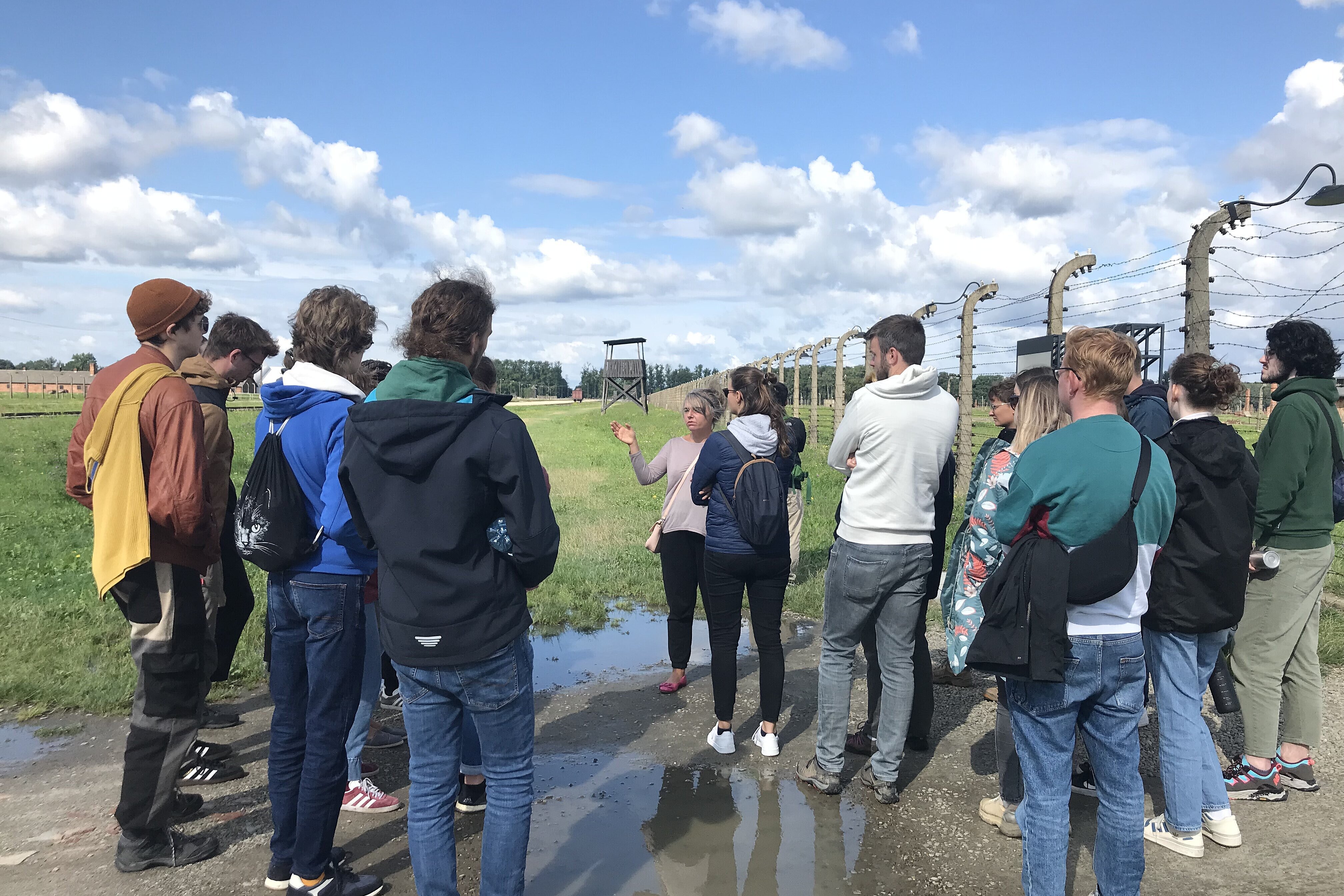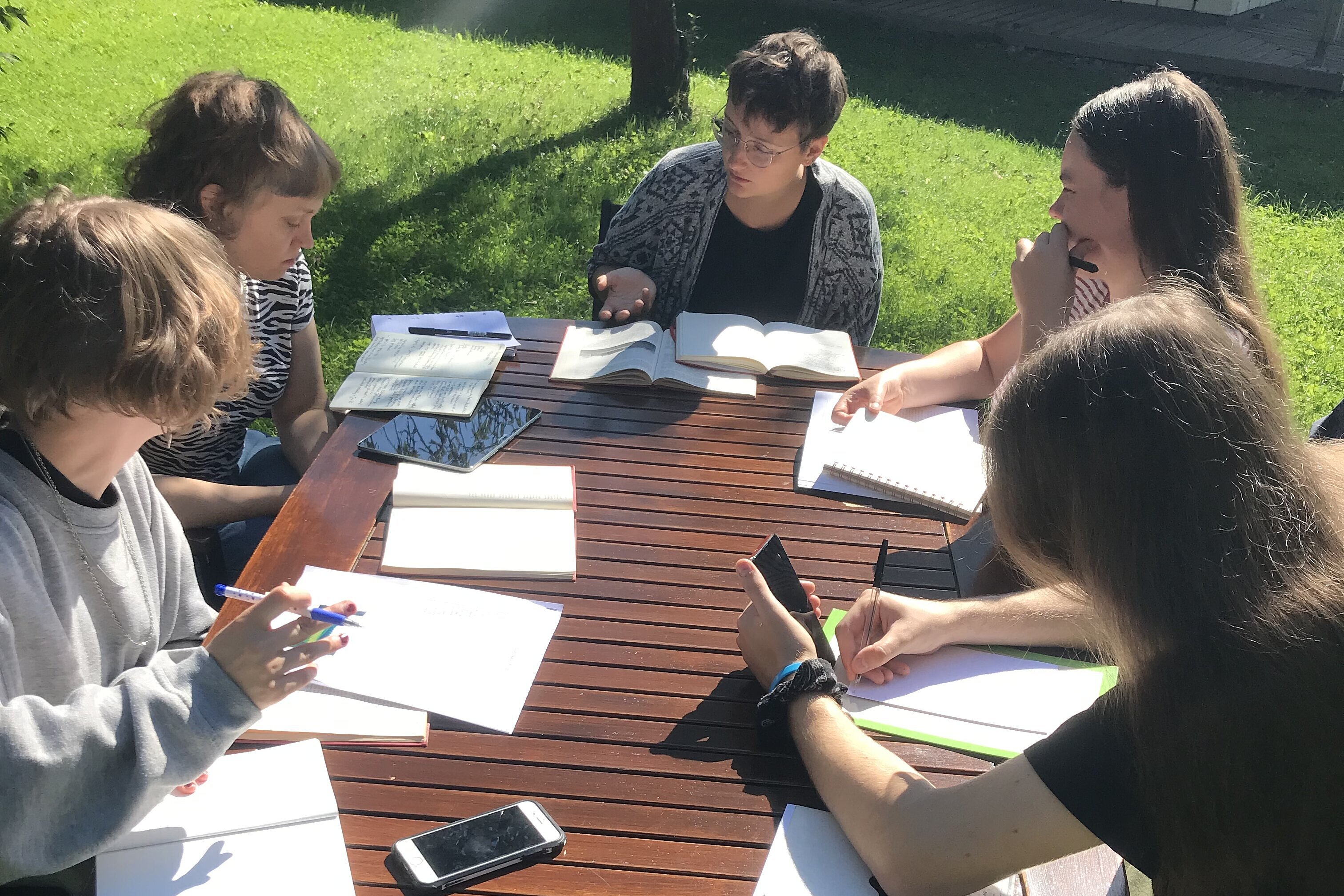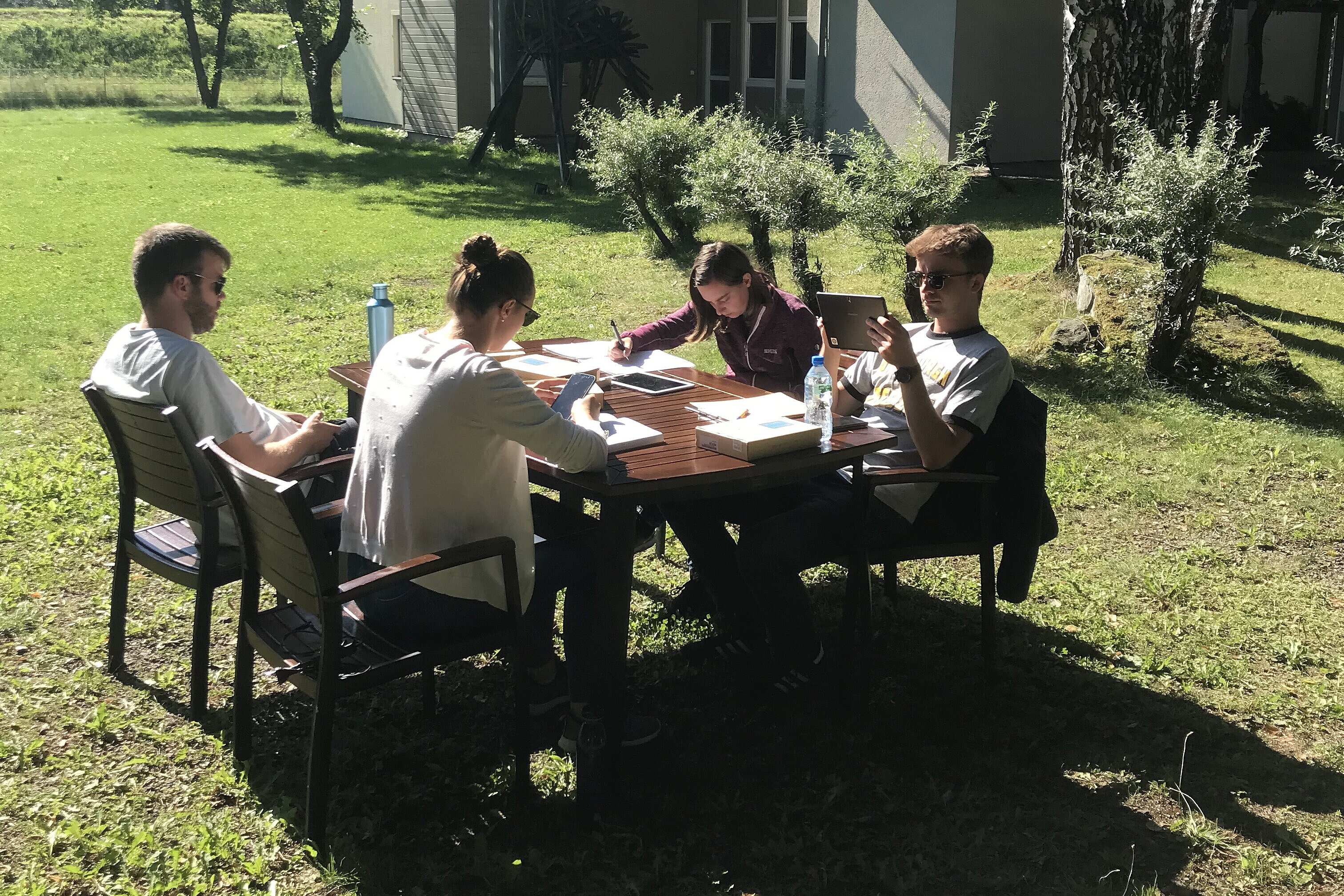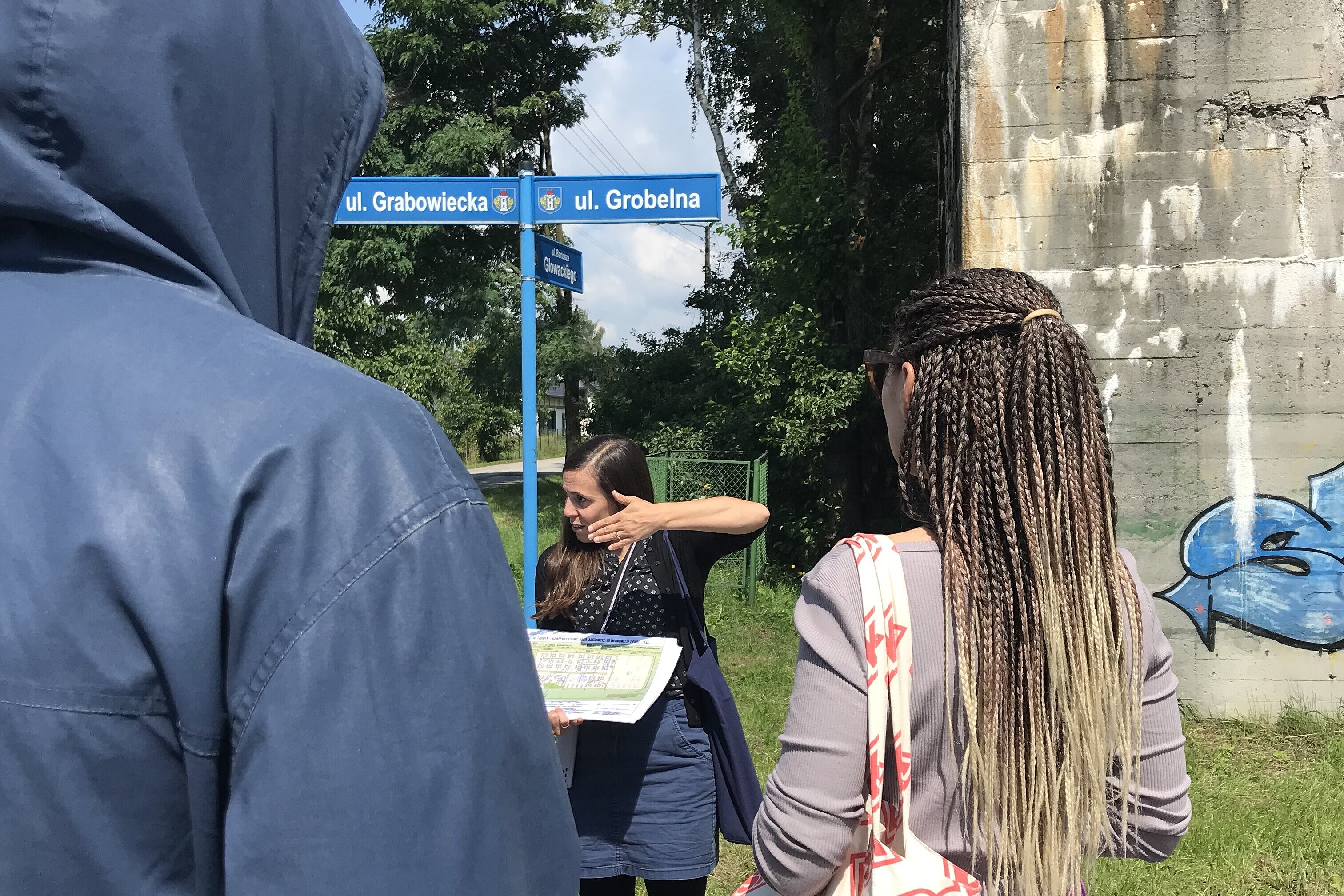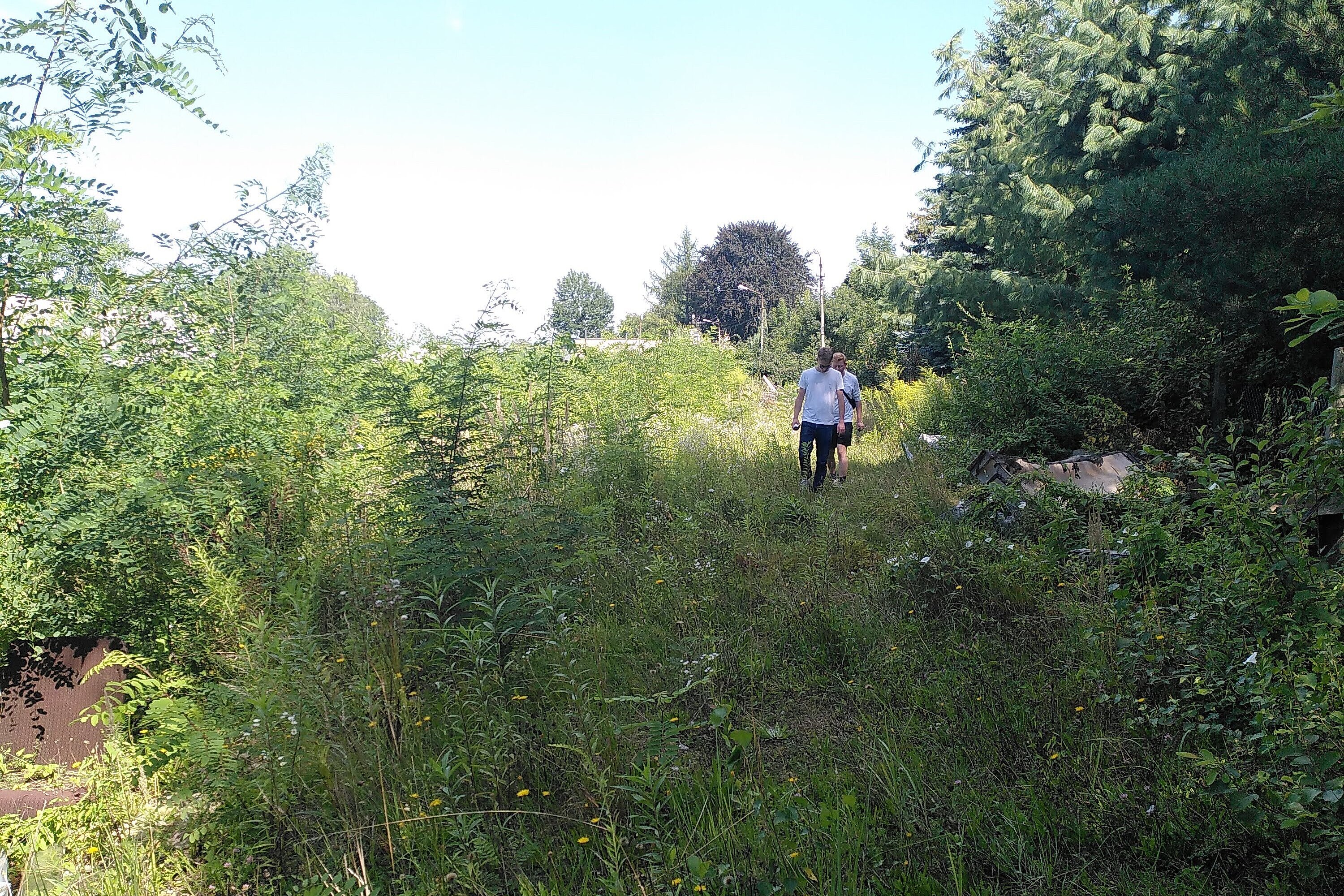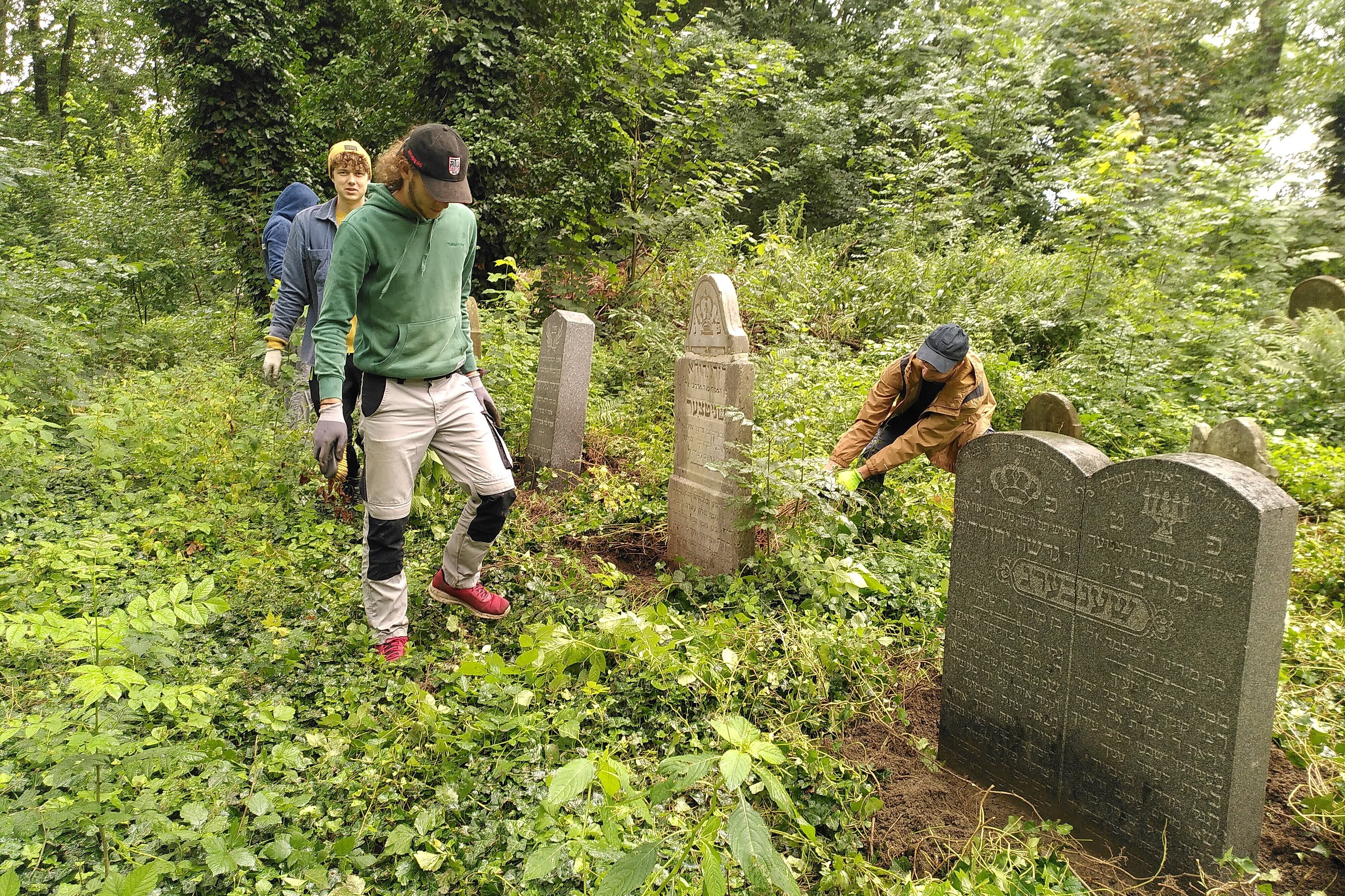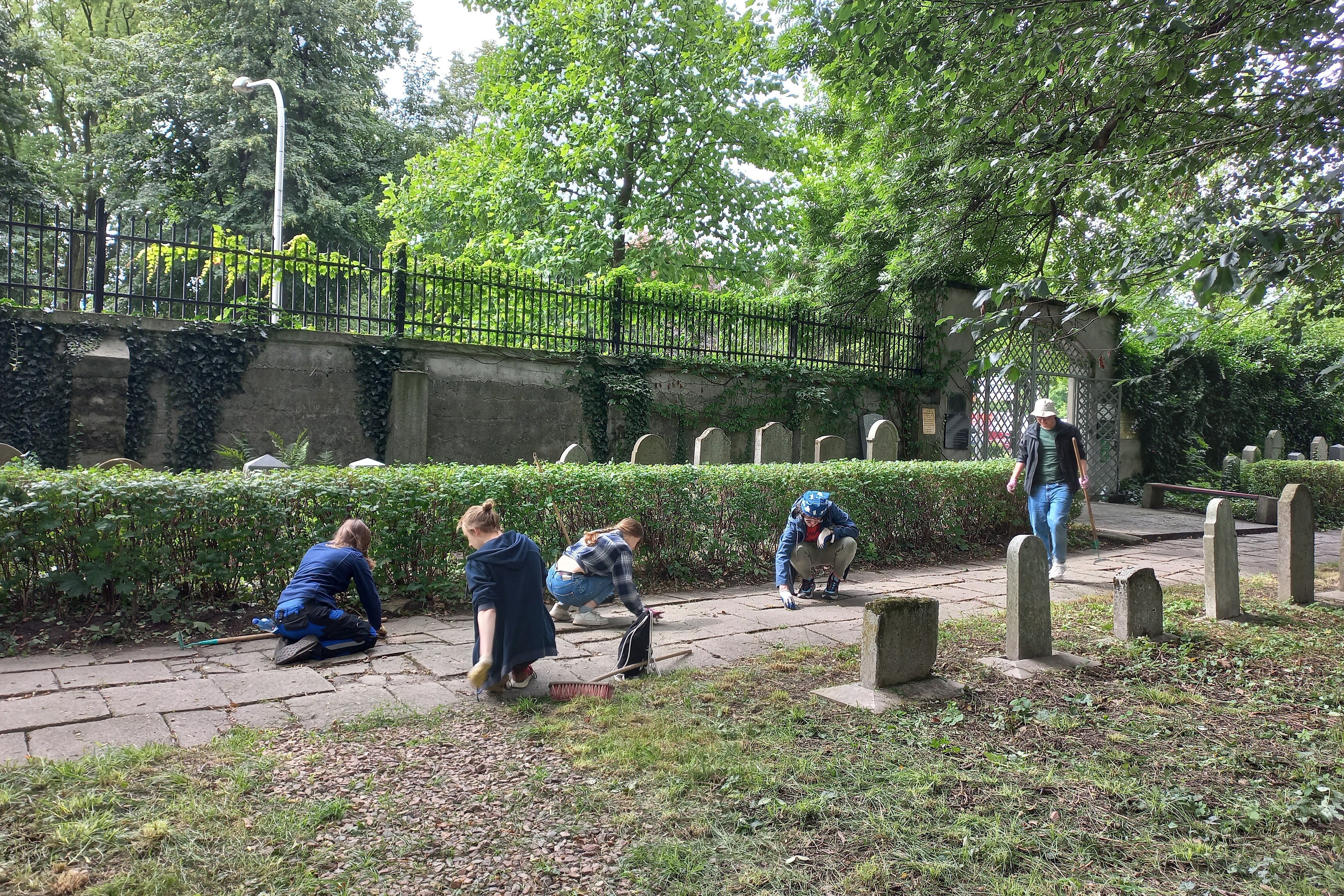Summer camp “Forgotten Histories”
The European summer Camp “Forgotten Histories” organized in cooperation with Action Reconciliation Service for Peace took place 05-15.08.2023 in the International Youth Meeting Center in Oświęcim. 25 participants from 4 EU countries (Germany, Poland, Slovakia) met for 10 days to learn, to discuss and to contribute to the remembrance and preservation of Auschwitz’s history.
The aim of the project was to support remembrance work on the Auschwitz subcamps and other places related to the Auschwitz camp complex, gather knowledge and debate on the topics of National Socialism and the Holocaust and talk about current forms of anti-Semitism and other forms of exclusion and discrimination.
Trough guided tours and workshops the participants learnt about the history of the Holocaust and Auschwitz but also about the Jewish-Polish history of the city Oswiecim. They discussed what consequences the committed crimes have until today and which mechanism and processes of anti-Semitism, racism and other forms of exclusion they can observe today. On one day of the program they carried out maintenance work at the Jewish cemetery in Oświęcim.
For the project they were working in small groups on different places of the Auschwitz camp complex. They researched the histories of this places, gathered testimonies of survivors, conducted on-site researches to find remains and traces as well as memorial signs and marked the locations on the today's map, so that in the future visitors can also visit these places independently.
During their research the participants were surprised by the fact that it was quite challenging to gather information on specific places and quite often only few or even no remains could be found, even though this places are also an integral part of the history of Auschwitz and of the experience of people who had been imprisoned and murdered there.
The places which had been researched were: the SS Central Construction Office (SS-Zentralbauleitung – ZBL), subcamp Budy, Kanada I and the tannery (Lederfabrik), as well as places where prisoners were exploited through forced labor as DAW (“Deutsche Ausrüstungswerke”, German Equipment Works), Zerlegbetrieb (salvage yard) and Union Werke who were located around the former main camp Auschwitz I.
The hands-on nature of the research empowered participants to contribute meaningfully to the preservation of Auschwitz’s history, ensuring their historical significance is preserved, even where physical remains were scarce and helped to raise awareness about the less-commemorated parts of this historical site. Additionally, the group participated in maintenance work at the Jewish cemetery in Oswiecim, directly contributing to preserving local heritage.
The work conducted in this summer camp will be continued in the year 2024.
This summer camp was funded by the European Union within the program CERV (“Citizens, Equality, Rights and Values”).


